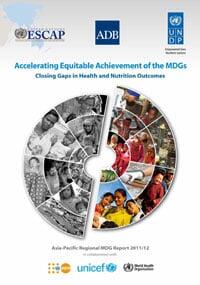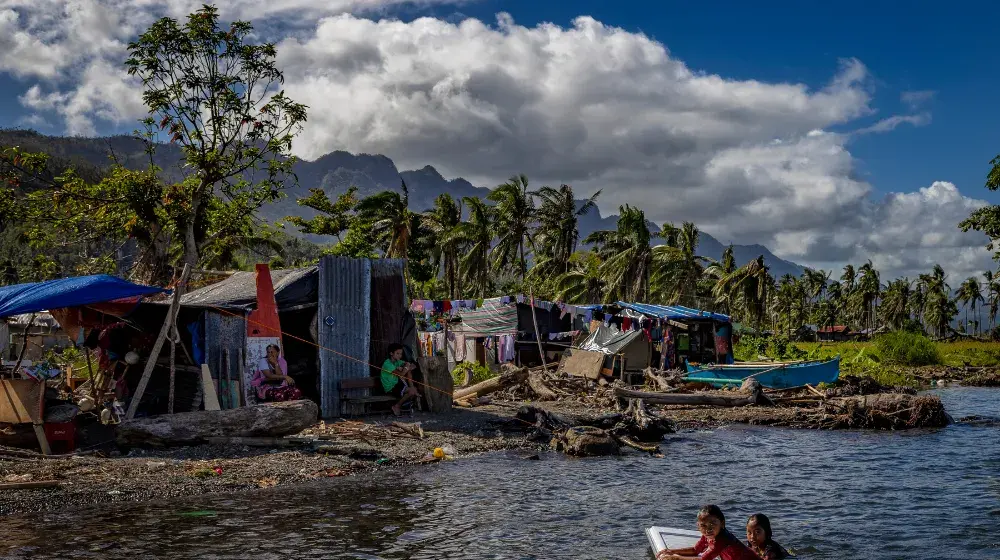NEW DELHI – The Asia-Pacific region has made great strides in reducing poverty and is moving fast towards other development goals, but levels of hunger and child and maternal mortality are still high, according to a United Nations and Asian Development Bank (ADB) report released here today.
The Asia-Pacific region has already reached the Millennium Development Goal (MDG) of halving the incidence of poverty, and reducing the proportion of people living on less than $1.25 per day from 50 to 22% between 1990 and 2009, according to the latest assessment of regional progress towards the MDGs published by ADB, the United Nations Economic and Social Commission for Asia and the Pacific (ESCAP) and the United Nations Development Programme (UNDP).
The region has also achieved some other MDG indicators ahead of the target year of 2015. These include promoting gender equality in education, reducing HIV prevalence, stopping the spread of tuberculosis, increasing forest cover, reducing consumption of ozone-depleting substances and halving the proportion of people without access to safe drinking water.
However, while strong economic dynamism has driven regional success in poverty reduction, even fast growing countries continue to lose shocking numbers of children before their fifth birthday, and thousands of mothers die unnecessarily while giving birth, the report reveals.
The report, Accelerating Equitable Achievement of the MDGs: Closing the Gaps in Health and Nutrition in Asia and the Pacific warns that at the present rate of progress, the region as a whole is unlikely to meet MDGs related to eradicating hunger, reducing child mortality and improving maternal health, among others.
“It is absolutely unacceptable that amid the unprecedented economic growth in recent history, disparities within and between countries are growing in our region and mothers and children are dying unnecessarily. We must redouble our efforts to promote inclusive growth and work for achieving the MDGs by 2015,” said Bindu Lohani, ADB’s Vice-President for Knowledge Management and Sustainable Development.
If governments are to raise standards of health they will have to focus much more sharply on the needs of the poor and vulnerable, says the report.
“We are in a race against time, with just three years left to achieve the MDGs. The good news though, is that our analysis shows many of these goals can still be reached with a redoubling of effort in the time remaining until 2015,” said ESCAP Executive Secretary and UN Under-Secretary-General Noeleen Heyzer via video message at the report launch. “On our goal of reducing child malnutrition, for instance, we need less than 2% annual improvement in all 14 off-track countries to meet the goal. We are so close to the finishing line - it is time for a big final push to 2015 on the MDGs.”
“It is clear that achieving health outcomes requires interventions in health, but more importantly outside the health sector to include water, nutrition, education and gender empowerment,” stated Ajay Chhibber, UN Assistant Secretary General and UNDP Associate Administrator and Director for Asia and the Pacific.
A picture of mixed progress
The report reveals striking disparities between and within subregions, countries and even social groups in their progress towards MDGs. While South Asia as a whole is on track for just nine MDG indicators, Sri Lanka is on track for 15 indicators and outperforms the sub-region.
While the number of people without access to safe drinking water in the region fell from 856 million to 466 million between 1990 and 2008, the region still accounts for more than half the total developing world population lacking safe drinking water. Asia-Pacific countries were also home to more than 70% of people without access to sanitation in the developing world in 2008.
Why some countries do better
According to the report, insufficient spending on health is a major cause of poor health outcomes. Inadequate health staffing and ineffective public health spending are also responsible. Women’s literacy and education levels, access to clean water, improved sanitation and basic infrastructure, such as better roads, also play a crucial role in improved public health.
Factors outside the health sector also influence health achievements. Good governance is important, and countries that are effective in controlling corruption tend to have better health results.
Fast-tracking progress
The report notes that many countries can speed up progress with just a little effort. Fourteen off-track Asia-Pacific countries need to accelerate progress by less than two percentage points annually to reach the target of halving the proportion of underweight children by 2015.
The joint report outlines an eight-point agenda to fast-track progress towards the health MDGs. This requires addressing the social determinants of health inequities and vulnerabilities; establishing an equitable, accessible, responsive and integrated primary health care system; and improving preventive, promotive and curative mother and child health services.
For more information, please contact:
In ADB, Harumi Kodama, tel. +63 2 632 5291, hkodama@adb.org
In ESCAP, Francyne Harrigan, mobile +66 81 825 8677, harriganf@un.org
In UNDP, Surekha Subarwal, tel. +91 11 4653 2346, surekha.subarwal@undp.org





